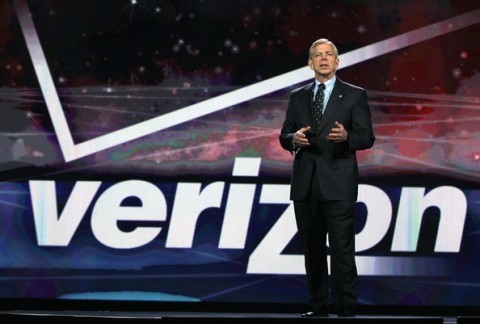Verizon Communications will buy AOL for nearly $4.4 billion to drive its LTE wireless video and OTT (over-the-top video) strategy.
There are a number of reasons behind the investment strategy.
The deal will support and connect to Verizon’s IoT (Internet of Things) platforms, creating a growth platform from wireless to IoT for consumers and businesses.
Less impressive financials
The financials of AOL does not impress too many. AOL clocked $625 million revenue that grew 7 percent in Q1 2015 with a net income of just $7 million.
AOL has generated Q1 2015 revenue of $484 million from advertising with 12 percent growth, $130 million from display with 4 percent drop, $116 million from search business with 19 percent growth and $231 million from third party properties with 19 percent growth.
On April 22, 2015 AOL decided sell 65 acres of land located in Virginia for approximately $24 million in cash, net of costs to sell the property. AOL will utilize the funds for general corporate purposes.
Interestingly, Yahoo was also considered as a potential target for acquisition. Verizon aims to unveil an Internet video service focused on wireless subscribers this summer. Digital brands such as The Huffington Post, TechCrunch, Engadget, MAKERS and AOL.com are owned by AOL. Verizon is aiming to utilize AOL’s advertising platform and subscription business. AOL Platforms revenue grew 21 percent in Q1 2015 — driven by 19 percent growth in Third Party Properties revenue, reflecting growth in the sale of premium formats, including video, across its programmatic platform.
Verizon chairman and CEO Lowell McAdam said: “Verizon’s vision is to provide customers with a premium digital experience based on a global multiscreen network platform. This acquisition supports our strategy to provide a cross-screen connection for consumers, creators and advertisers to deliver that premium customer experience.”
 .
.
Digital biz booms
IHS says advertising revenue from online video doubled to $11.2 billion between 2011 and 2014, and will increase to $13.8 billion in 2015. IHS forecasts that by 2017, online video advertising revenues will reach $19 billion, with TV advertising budgets beginning to see cannibalization by digital in some markets. TV will make up only 28 percent of total advertising in Western Europe at that time.
TV is taking a hit from online and on-demand video. In 2013, TV declined seven minutes per person. In contrast, online video services have seen impressive growth and increasing viewing share in the past two years, with YouTube’s numbers showing a 50 percent growth in hours watched, year on year.
In 2014, Facebook surpassed YouTube as the leader in online video impressions. Facebook will be a significant threat to online video publishers for ad revenue. Facebook will account for 25.7 percent of all online video ad revenue by 2018.
Telecoms and digital biz
Verizon has strategically invested in emerging technology, including Verizon Digital Media Services and OTT that taps into the market shift to digital content and advertising. AOL’s advertising model aligns with this approach, and the advertising platform provides a tool for Verizon to develop future revenue streams.
Digital content is becoming a growth area for telecoms. AT&T is yet to receive approval from FCC for its proposal to acquire satellite TV broadcaster DirecTV Group.
In India, Reliance Jio Infocomm, a 4G telecom operator owned by billionaire Mukesh Ambani, had recently acquired TV 18 group, a media conglomerate in India.
In 2014, Verizon acquired online platform called OnCue from chip major Intel. In 2013, Verizon purchased Edgecast Networks, which operates a content delivery network.
Baburajan K
[email protected]





